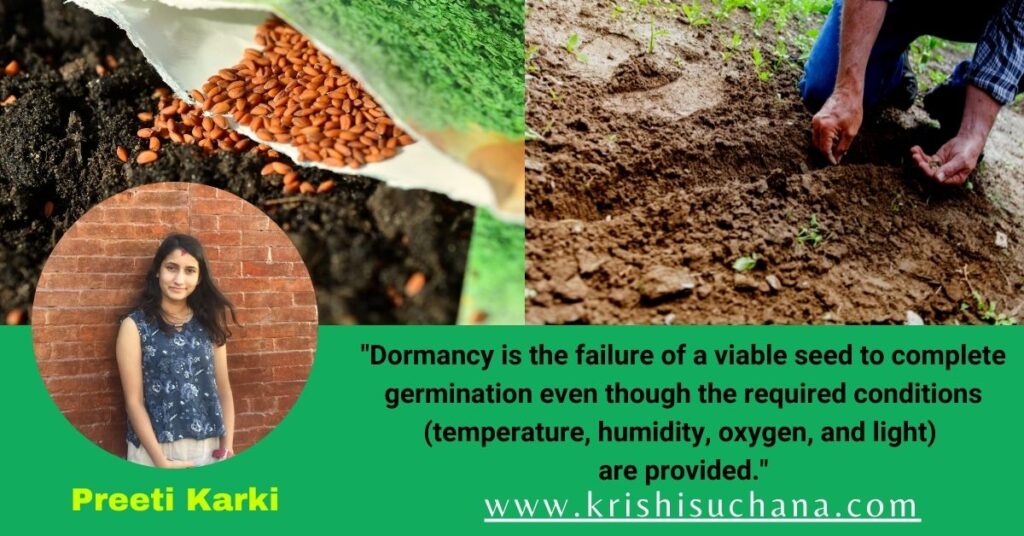SEED DORMANCY, ITS CAUSES , IMPORTANCE AND METHOD OF BREAKING SEED DORMANCY

Seeds germinate to grow and survive from seedlings at a favourable time and place. But some of the seeds fail to germinate even after being provided with favourable conditions. Dormancy is the failure of a viable seed to complete germination even though the required conditions (temperature, humidity, oxygen, and light) are provided. It is imposed by ABA during seed development, persists in mature seeds. Dormancy lasts from a few weeks to several years, depending on species.
Types of seed dormancy
- Physical dormancy
- Chemical dormancy
- Morphological dormancy
- Physiological dormancy
Dormancy caused by an impermeable seed coat is known as physical dormancy. Physical dormancy is the result of impermeable seed coat that develops during maturation and during drying of the seed. This impermeable layer prevents the seed from taking up water or gases. Due to this, germination is prevented.
This type of dormancy is caused due to certain chemicals or growth inhibitors which cease germination. The adverse effects of these inhibitors should be eliminated in order to start germination by using germination-promoting substances such as gibberellic acid (GA3) and potassium nitrate (KNO3). The most common inhibitor is abscisic acid (ABA).
This occurs when the embryo is underdeveloped. As a result, embryos require time to differentiate and grow before germination occurs. These embryos don’t have physiological dormancy but requires additional time in order to develop and mature properly.
In physiological dormancy, germination is prevented by physiological inhibiting mechanism. In order to germinate, the seed should be able to meet certain physiological condition. Physiological dormancy prevents embryo growth and seed germination until chemical changes occur. Physiological dormancy is indicated when an increase in germination rate occurs after an application of gibberellic acid.
Methods to break dormancy
1. Scarification
In this process, the hard seed coat is made permeable by softening the hard seed coat. It is done by rubbing the seed against hard abrasive material or by using certain chemicals.
Certain acids may be used in order to soften the hard seed coat.
2. Stratification
Stratification is a cold, moist period that breaks seed dormancy. It involves mixing the seed with a moist medium and keeping warm and/or cold for a certain time before sowing. The seeds are kept in between layers of well aerated, moist soil for certain chilling hours.
3. Use of chemicals
The chemicals which are used commercially in various places are including: potassium nitrate, thiourea, gibberellic acid, sulfuric acid, ethanol and Cyanamid. All of these chemicals are cost effective and can be used easily to break dormancy of seeds effectively.
Significance of seed dormancy in agriculture
- Seed dormancy allows seeds to overcome periods that are unfavourable for seedling establishment.
- It helps in the storage of seeds which can be used for consumption by humans and animals.
- It helps in the dispersal of the seeds through the unfavourable environment.
- Dormancy induced by the inhibitors present in the seed coats is highly useful to desert plants.
- In temperate zones, the dormancy of seeds helps the plants to tide over severe cold which may be injurious for their vegetative and reproductive growth
Writer: Preeti Karki (Student, Bsc Ag 4th Sem, IAAS)

